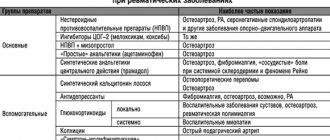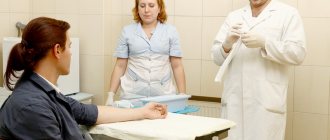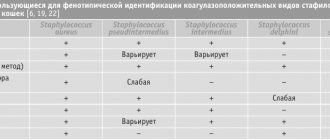Video on the topic:
all videos on the topic
Bone tuberculosis (osteoarticular tuberculosis) is a specific inflammatory disease that occurs in conditions of hematogenous dissemination of the tuberculous process. Tuberculous lesions of bone tissue are most often localized in areas rich in bone marrow (vertebral body, epiphyseal sections of long tubular bones, spongy bones) and are much less common in the diaphyseal sections of short and long tubular bones. When the tuberculosis bacillus penetrates the spongy parts of the bone, a primary lesion (ostitis) occurs, which subsequently spreads to the joints and surrounding tissues, causing their destruction.
The disease can affect various parts of the musculoskeletal system, but most often develops in the spine and large joints (knee, hip, elbow, shoulder and wrist). Complications of tuberculosis of bones and joints, in the absence of adequate treatment, are curvature of the back, the formation of a hump, complete immobility of the joints, muscle atrophy, shortening and paralysis of the limbs.
There are three phases of the disease:
- pre-arthritic phase – formation of a primary lesion (ostitis);
- arthritic phase - the beginning, height and subsidence of secondary arthritis,
- post-aging phase – consequences of tuberculous arthritis (exacerbations, prolonged course, relapses).
Causes of bone tuberculosis
Bone tuberculosis is always a consequence of hematogenous transfer of the tuberculosis bacillus from the primary source of infection (with late reactivation of the process - from old tuberculosis foci). A reactive inflammatory process begins around the pathogen, an infectious granuloma develops, with the growth of which the bone substance dissolves, abscesses, fistulas and sequesters are formed.
Osteoarticular tuberculosis occurs in all age groups, but due to the anatomical and physiological characteristics of a growing organism, which is characterized by a richly developed vascular network of the epiphyses of bones and vertebral bodies, the disease poses the greatest threat to children. In old age, this form of tuberculosis develops relatively rarely.
The development of bone tuberculosis can be caused by the influence of various factors:
- poor social conditions,
- fasting or malnutrition,
- frequent infectious diseases,
- chronic stress,
- long-term treatment with glucocorticoids or immunosuppressants;
- HIV.
Osteoarticular tuberculosis
Tuberculosis of bones and joints is a chronic infectious disease of the musculoskeletal system caused by Mycobacterium tuberculosis complex (M. tuberculosis), characterized by the formation of a specific granuloma and progressive bone destruction, leading to pronounced anatomical and functional disorders of the affected part of the skeleton.
Tuberculosis of the joints . Over the past 10 years, the proportion of patients with this form of tuberculosis has increased almost 4 times. Time to diagnosis averages 12.3 months. from the moment the first symptoms of the disease appear. Active forms of a specific process in the joints began to be registered 34.2% more often, in 38.5% of cases the disease is accompanied by specific damage to other organs and systems, including various forms of pulmonary tuberculosis. Tuberculous arthritis is complicated by contractures (severe mobility impairments) in 83.0% of cases, periarticular abscesses and fistulas - in 11.9% of patients. The proportion of progressive arthritis, subtotal and total forms of joint damage has increased (33.3 and 8.9% of cases, respectively). The overall drug resistance of the pathogen to the main antibacterial drugs reached 64.3%. 72.6% of patients have concomitant pathology.
Spinal tuberculosis, or tuberculous spondylitis , is an inflammatory disease, the characteristic feature of which is the destruction of the vertebral bodies with subsequent deformation of the spine and the development of dysfunction of the internal organs innervated by the corresponding part of the spinal cord. Tuberculous spondylitis ranks first among all localizations of osteoarticular tuberculosis, accounting for 50-60% of the total number of patients. Recently, the number of adults with newly diagnosed tuberculous spondylitis has increased sharply. Men suffer from spinal tuberculosis more often than women, on average in a ratio of 55:45. According to the location of the lesion, the thoracic (60%) region of the spine is in first place, and the lumbar (30%) part of the spine is in second place. The incidence of cervical and sacral lesions is 5%. Most often it manifests itself with pain and fractures that are inexplicable at first glance. Damage to the 1st and 2nd vertebrae can cause sudden death, especially in young people. In newly diagnosed patients, damage to 2-3 vertebrae is most often detected (65%), destruction of the body of one vertebra is encountered in 1-3% of cases. Extensive destruction is most typical for the thoracic and lumbar spine. In long-term patients, 10 or more vertebrae may be affected. Local damage to the posterior structures (arches, articular, spinous and transverse processes) is rarely observed. In recent years, the number of patients with spinal tuberculosis in combination with active pulmonary tuberculosis has increased.
The extent of the lesion is determined by the number of vertebrae affected.
- Local (limited) lesion - tuberculous osteitis - a single focus within one vertebra or a lesion within one spinal motion segment (SMS).
- Common lesions are those that are identified in two or more adjacent PDS.
- Multiple - lesions of two or more non-adjacent SMS.
- Combined forms are lesions of two or more organs belonging to different systems.
Localization of the lesion: the tuberculosis process in the spinal column can be localized both in the anterior parts of the vertebrae (bodies, roots of the arches), and in the posterior parts - in the articular, transverse, spinous processes and arches of the vertebrae. Damage to the posterior vertebrae is often called posterior spondylitis.
Complications. Neurological complications: radicular syndrome, pyramidal insufficiency syndrome, paresis of varying depths, plegia, myelopathy, dysfunction of the pelvic organs. General complications of tuberculosis (toxic-allergic lesions, amyloidosis, secondary immunodeficiency, etc.). Local inflammatory complications: abscesses, fistulas (they pose a risk of spreading tuberculosis among people around the patient). Orthopedic complications: deformities, spinal instability.
Clinical cure is established in patients who have received complex, including surgical treatment, in the absence of clinical and laboratory signs of the activity of a specific process, anatomical and functional disorders.
Symptoms of bone tuberculosis
Clinical manifestations of bone tuberculosis are determined by the location and nature of the pathological process. The initial stages of the disease often occur without significant symptoms.
The first signs of tuberculosis, characteristic of the prearthritic phase of the disease:
- lethargy, drowsiness, general weakness;
- moderate increase in body temperature (up to 37 - 37.8 ° C);
- irritability;
- nagging muscle pain.
When the disease passes into the arthritic phase, an intensification of existing clinical symptoms is observed, which are accompanied by signs of local damage. The nature of the symptoms depends on the location and stage of development of tuberculous inflammation:
- increase in body temperature to 38 – 39 °C;
- severe, severe pain in the spine or joints;
- limitation of joint mobility;
- swelling, hyperemia, muscle contractions, soft tissue atrophy and accumulation of serous exudate in the area of the affected joint;
- shortening of limbs, lameness, sudden stoop;
- formation of abscesses.
The calming stage is characterized by a gradual improvement in general condition, a decrease in body temperature, a decrease in the inflammatory process and normalization of blood tests.
Causes and pathogenesis
The main cause of the pathology is the bacteria Mycobacterium tuberculosis. They are slightly curved rods 1-10 microns long and 0.2-0.6 microns wide. They lack the ability to move and do not form capsules or spores. Obligate aerobes, have the properties of alcohol and acid resistance.
Acid-fast bacilli are the main causative agent of tuberculosis.
This is interesting. For many years, tuberculosis has remained one of the social diseases. March 24 (the day when the German microbiologist Robert Koch first isolated the culture of acid-fast bacilli in 1882) was declared by WHO as the Day against this infection.
Infection with mycobacteria can occur through airborne droplets, as well as through dirty hands, food, etc. It is known that the favorite place of localization and pathological activity of the microbe is the lungs - tissues that are maximally saturated with oxygen. Why does bone tissue damage occur?
TBS of the lungs is most often diagnosed
Once in the body, Koch's bacillus spreads through the bloodstream, lingering in certain tissues, including bones. In some cases, secondary infection from an existing inflammatory focus in the lungs is possible.
After hematogenous spread of MBT, they may settle in:
- synovial membrane of the joint;
- epiphyses of bones;
- metaphyses of bones.
Subsequently, small tuberculous foci develop in these tissues, which grow slowly, but over time lead to serious and irreversible changes.
Among them:
- obliteration of the joint cavity;
- creation of fistulas, abscesses;
- ankylosis of the joint.
Pathogenesis of the disease
However, the entry of an infection into the body does not always lead to infection. The state of the child’s immunity and health as a whole plays an important role in pathogenesis.
Tuberculosis often develops against the background of:
- regular excessive load on the musculoskeletal system;
- hypothermia;
- insufficient or unbalanced nutrition;
- injuries;
- concomitant chronic diseases or infections;
- unsatisfactory material and housing conditions;
- prolonged contact with the bacteria excretor;
- severe psychotraumatic situations, stress;
- taking certain drugs that affect the functioning of the immune system (corticosteroids, immunosuppressants).
Often infection occurs against the background of weakened immunity
Diagnosis of bone tuberculosis
If tuberculosis is suspected, the patient is sent to a specialized dispensary for an in-depth examination and diagnosis.
Diagnostic research methods:
- physical examination,
- clinical blood test,
- bacteriological examination of exudate or bone tissue,
- Mantoux test,
- linked immunosorbent assay,
- x-ray of bones,
- MRI or CT,
- bone biopsy.
One of the main tasks of the differential diagnosis of bone tuberculosis is the exclusion of diseases such as epiphyseal osteomyelitis, joint syphilis, joint hydrops, osteochondropathy, arthritis of various etiologies and tumor processes.
Principles of treatment
Therapy for the disease should be comprehensive and include:
- Long-term use of antibacterial drugs (antibiotics effective against the pathogen TBS) according to standard regimens.
- According to indications - surgical intervention, which is performed to remove necrotic tissue, restore joint function, etc.
- During the acute period of the disease - wearing plaster casts, corsets, splints in order to unload the affected joints.
- Spa treatment.
- Exercise therapy.
- Massage.
- Physiotherapy.
A popular area of reconstructive surgery is endoprosthetics
Damage to the child's bones and joints is accompanied by extensive destruction. If tuberculosis is not diagnosed and treated promptly, it can lead to early and severe disability. Be attentive to the health of the baby, because the cost of delay can be very high.
Treatment of bone tuberculosis
Osteoarticular tuberculosis is of a secondary nature, therefore general and local treatment is carried out, aimed at strengthening the body's resistance and limiting pathological changes. The recovery process is always long and can take from one and a half to three years of continuous comprehensive treatment, which includes:
- regular nutritious meals;
- prolonged exposure to fresh air;
- orthopedic treatment (in case of damage to the spine - bed rest in a plaster bed, wearing a plaster and removable corset; in case of damage to the joints of the limbs - application of a plaster cast);
- prescription of anti-tuberculosis drugs;
- surgical treatment (joint resection, endoprosthetics, alloplasty, intra-articular necrectomy, etc.).
Return to list
Clinical manifestations
TBS spine
Bone tuberculosis in a child with a predominant lesion of the spine (Pott's disease) is most common in practical medicine. Typically, several vertebrae in the lumbar or thoracic region are affected.
This is what the affected vertebrae look like
In the first phase of the pathology, patients complain of general poor health and lack of appetite.
Later the following symptoms appear:
- pain during active movements of the body (especially bending and turning);
- limited mobility in the back;
- curvature of the spine, sometimes the appearance of a hump;
- muscle tension around the affected area;
- abscesses, fistulas on the skin.
Back pain is the first sign of health problems
Important! In case of displacement of the vertebrae, compression of the spinal cord may develop, which causes dangerous symptoms such as paralysis of the limbs and disorders of the pelvic organs.
After active inflammation subsides, spinal deformity persists in the form of kyphosis or scoliosis, sometimes a change in the shape of the chest, muscle atrophy (see photo).
Tuberculous spondylitis
Severe chest deformation
Coxite
TBS of the hip joints is characterized by the involvement of the femoral head and acetabulum in the inflammatory process.
Damage to the hip joint
In the prearthritic phase, children complain of deterioration in health, weakness, pain in the affected area after physical activity.
Note! After a night's sleep or rest, all discomfort disappears, so patients may not see a doctor for a long time.
Then the baby’s condition gradually worsens, his signs of intoxication increase (including fever up to 38.5-39 degrees). The pain in the leg becomes constant and almost unbearable.
Over time, the thigh muscles undergo atrophy, the skin turns red and swells. The formation of fistulas is also common: most often they are located on the thigh, lower back, and perineum. Purulent-necrotic masses can be released from them. As a result, the movement of the limb becomes sharply difficult.
It becomes difficult for the child to walk
Drives
With tuberculous lesions of the knee joint, patients first complain of pain in the leg. Then the unpleasant sensations intensify, movement in the leg becomes sharply difficult and lameness develops. Like other forms of osteoarticular TBS, driving is often accompanied by general manifestations of intoxication.
Knee joint damage
Diagnostics
The following criteria are used for diagnosis:
- careful collection of anamnesis - whether there was contact with patients, its duration, BCG vaccination, the nature of the body’s reaction to it;
- results of imaging studies (radiography, CT, MRI), they show joint and bone damage;
- results of a biopsy and analysis of the contents of a joint or bone abscess, revealing the presence of Koch’s bacillus;
- blood test results. They are most often normal and therefore do not contribute to the diagnosis.
During a clinical examination, the doctor evaluates external deformities, the presence of fistulas and abscesses, contractures, and neurological symptoms. The most reliable analysis confirming or refuting the presence of bone tuberculosis in children is a biopsy.
Benefits of treating tuberculosis in children in Belgium
The practice of treating children of different age categories in Belgium is characterized by the rapid improvement of medical and preventive technologies. In modern clinics equipped with the latest technology, each child receives highly qualified assistance from the best specialists. The competence of doctors includes not only the treatment of small patients, but also the organization of the rehabilitation period for them.
There are a number of undeniable advantages in treatment abroad:
- Individual approach to each patient.
- Organizing the most comfortable conditions for the child during the treatment period.
- Absolute compliance with high quality standards of diagnosis and treatment.
- High accuracy of predicting treatment results.
- High level of development of minimally invasive and non-invasive treatment methods.










